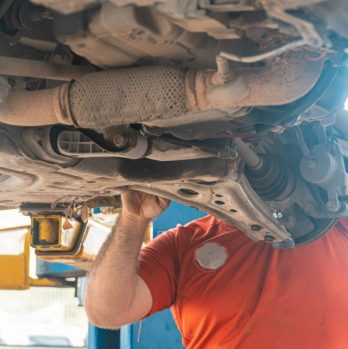American Classic Cars: A Brief Overview of Automotive History

Introduction:
American classic cars have earned a prominent place in the hearts of automotive enthusiasts worldwide. Their bold designs, powerful engines, and historical significance make them highly sought after. In this article, we will provide a comprehensive overview of American classic cars, exploring their types, popularity, and key features. Through quantitative measurements, we will delve into the performance aspects that set these cars apart. Additionally, we will discuss the distinct characteristics that differentiate various classic car models. This article will also offer a historical analysis, highlighting the advantages and disadvantages of different American classic cars. Finally, we will focus on the crucial decision-making factors for car enthusiasts when purchasing these classic vehicles.
I. Understanding American Classic Cars

American classic cars encompass various models produced primarily between the 1920s and the 1960s. These vehicles are known for their iconic designs, representing different eras of automotive history. From the elegant and luxurious Cadillacs to the muscle cars like the Ford Mustang and Chevrolet Camaro, American classics possess a timeless appeal.
II. Types and Popularity of American Classic Cars
1. Luxury Classics:
Luxury American classic cars include prestigious brands like Cadillac, Lincoln, and Packard. These vehicles exhibit opulence, offering the perfect blend of elegance and comfort. The Cadillac Eldorado and Lincoln Continental are prime examples of luxury classics that have stood the test of time.
2. Muscle Cars:
Muscle cars are a prominent category within American classic cars. As symbols of power and performance, models like the Chevrolet Camaro, Pontiac GTO, and Ford Mustang have become iconic. These cars are known for their high horsepower engines, aggressive styling, and exhilarating driving experience.
3. Vintage Classics:
Vintage classics encompass a wide range of models produced during the early 20th century. From the Ford Model T to the Buick Skylark, these cars represent the pioneering era of the automotive industry. The unique craftsmanship and timeless appeal of vintage classics make them highly coveted among collectors.
III. Quantitative Measurements of American Classic Cars
1. Acceleration and Top Speed:
Quantitative measurements play a crucial role in understanding the performance capabilities of American classic cars. Acceleration times and top speed provide insights into the raw power these vehicles possess. For example, the Shelby Cobra 427 can achieve a 0-60 mph time of under four seconds, showcasing its impressive acceleration.
2. Braking and Handling:
Braking distance and handling characteristics are essential aspects of classic car performance. The ability to confidently maneuver these vehicles at high speeds enhances both safety and driving pleasure. Cars like the Chevrolet Corvette and Ford GT offer exceptional braking and precise handling, making them exhilarating to drive.
3. Fuel Efficiency:
While American classic cars are known for their powerful engines, they often lag in fuel efficiency compared to modern cars. It is important to consider the trade-off between performance and fuel consumption when assessing the utility of these vintage vehicles.
IV. Differences Among American Classic Cars
American classic cars boast unique features and attributes that distinguish them from one another. Factors like body design, engine specifications, and overall styling contribute to these distinctions. For instance, the Ford Thunderbird, with its iconic porthole windows and sleek curves, stands out as a symbol of 1950s automotive design.
V. Historical Overview of Advantages and Disadvantages
1. Advantages:
American classic cars offer a myriad of advantages, including timeless designs, sturdy construction, and the thrill of owning a piece of history. These vehicles often appreciate in value over time, making them attractive investments for enthusiasts.
2. Disadvantages:
Classic cars, while captivating, may present some challenges. Maintenance and restoration costs can be high, especially for rare models. Additionally, the absence of modern safety features, limited fuel efficiency, and difficulties finding spare parts are considerations that potential owners must bear in mind.
VI. Crucial Decision-Making Factors for Car Enthusiasts
When purchasing a classic car, automotive enthusiasts consider various factors that influence their decision. These factors include:
1. Rarity and Originality:
The scarcity of a model and its adherence to original specifications can significantly impact its desirability and value.
2. Condition and Restoration:
The overall condition of a classic car, including the quality of its restoration, is crucial for potential buyers.
3. Brand Reputation and Heritage:
Certain brands have established themselves as icons in the classic car world, influencing enthusiasts’ preferences and perceptions.
Conclusion:
American classic cars have left an indelible mark on the automotive industry, representing an era of innovation, design excellence, and raw power. From luxury classics to muscle cars and vintage gems, these vehicles continue to captivate car enthusiasts worldwide. As we explored their types, popularity, quantitative measurements, distinguishing features, historical advantages, and drawbacks, it is evident why these American classics hold a special place in the hearts of enthusiasts. The decision of purchasing a classic car involves careful consideration of factors like rarity, condition, and heritage, ensuring that the chosen vehicle resonates with the buyer’s passion for automotive history.
[INSERT VIDEO HERE]
References:
– Kelly, S. (2017). American Muscle Cars. Lerner Publications.
– Mueller, M. (2016). American cars of the 1960s. Motorbooks International.
– Norbye, J. P. (2013). The American car since 1775. Simon and Schuster.











